i've been trying to match a scanned formular with its empty template. The goal is to rotate and scale it to match the template.
Source (left), template (right)
Match (left), Homography warp (right)
The template does not contain any very specific logo, fixation cross or rectangular frame that would conveniently help me with feature or pattern matching. Even worse, the scanned formular can be skewed, altered and contains handwritten signatures and stamps.
My approach, after unsuccessfully testing ORB feature matching, was to concentrate on the shape of the formular (lines and column).
The pictures I provide here are obtained by reconstituting lines after a segment detection (LSD) with a certain minimum size. Most of what remains for source and template is the document layout itself.
In the following script (that should work out of the box along with pictures), I attempt to do ORB feature matching, but fail to make it work because it is concentrating on edges and not on the document layout.
import cv2 # using opencv-python v3.4
import numpy as np
from imutils import resize
# alining image using ORB descriptors, then homography warp
def align_images(im1, im2,MAX_MATCHES=5000,GOOD_MATCH_PERCENT = 0.15):
# Detect ORB features and compute descriptors.
orb = cv2.ORB_create(MAX_MATCHES)
keypoints1, descriptors1 = orb.detectAndCompute(im1, None)
keypoints2, descriptors2 = orb.detectAndCompute(im2, None)
# Match features.
matcher = cv2.DescriptorMatcher_create(cv2.DESCRIPTOR_MATCHER_BRUTEFORCE_HAMMING)
matches = matcher.match(descriptors1, descriptors2, None)
# Sort matches by score
matches.sort(key=lambda x: x.distance, reverse=False)
# Remove not so good matches
numGoodMatches = int(len(matches) * GOOD_MATCH_PERCENT)
matches = matches[:numGoodMatches]
# Draw top matches
imMatches = cv2.drawMatches(im1, keypoints1, im2, keypoints2, matches, None)
# Extract location of good matches
points1 = np.zeros((len(matches), 2), dtype=np.float32)
points2 = np.zeros((len(matches), 2), dtype=np.float32)
for i, match in enumerate(matches):
points1[i, :] = keypoints1[match.queryIdx].pt
points2[i, :] = keypoints2[match.trainIdx].pt
# Find homography
h, mask = cv2.findHomography(points1, points2, cv2.RANSAC)
# Use homography
if len(im2.shape) == 2:
height, width = im2.shape
else:
height, width, channels = im2.shape
im1Reg = cv2.warpPerspective(im1, h, (width, height))
return im1Reg, h, imMatches
template_fn = './stack/template.jpg'
image_fn = './stack/image.jpg'
im = cv2.imread(image_fn, cv2.IMREAD_GRAYSCALE)
template = cv2.imread(template_fn, cv2.IMREAD_GRAYSCALE)
# aligh images
imReg, h, matches = align_images(template,im)
# display output
cv2.imshow('im',im)
cv2.imshow('template',template)
cv2.imshow('matches',matches)
cv2.imshow('result',imReg)
cv2.waitKey(0)
cv2.destroyAllWindows()
Is there any way to make the pattern matching algorithm work on the image on the left (source)? (another idea was to leave only lines intersections)
Alternatively, I have been trying to do scale and rotation invariant pattern matching for loops and while keeping max correlation, but it is way too resource consuming and not very reliable.
I'm therefore looking for hints in the right direction using opencv.
